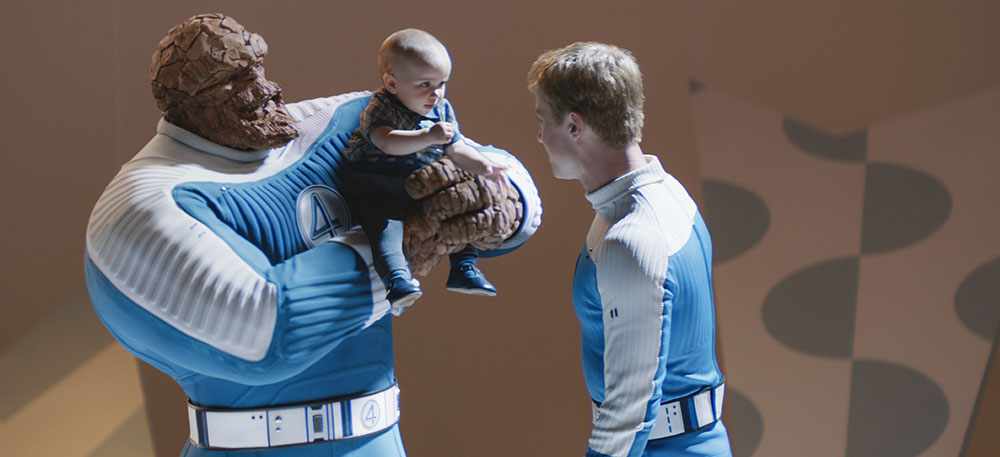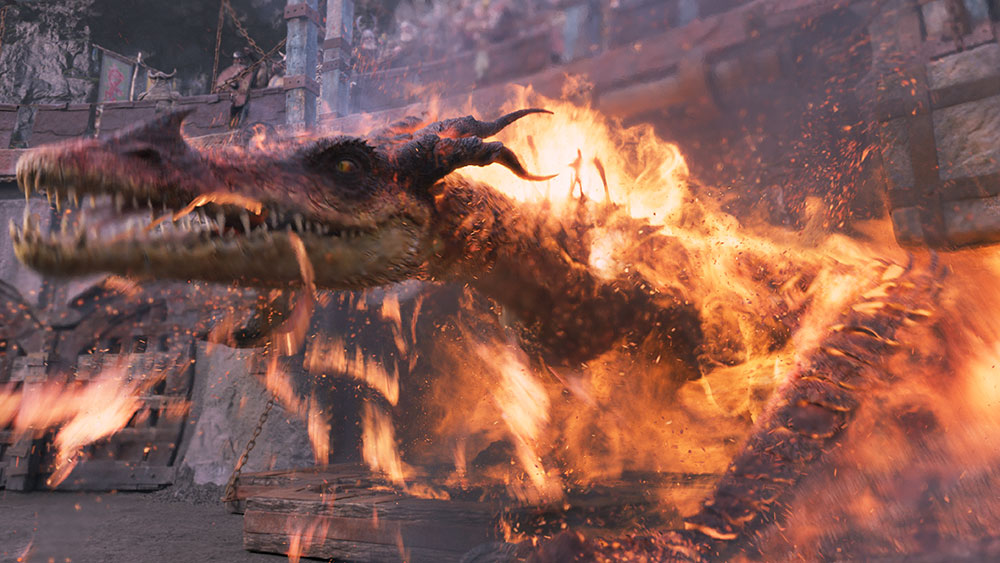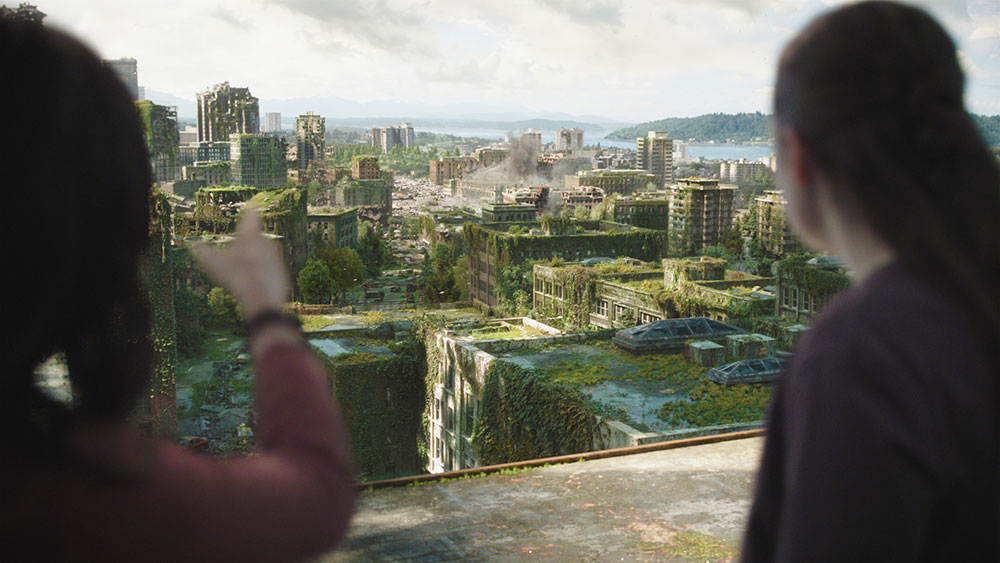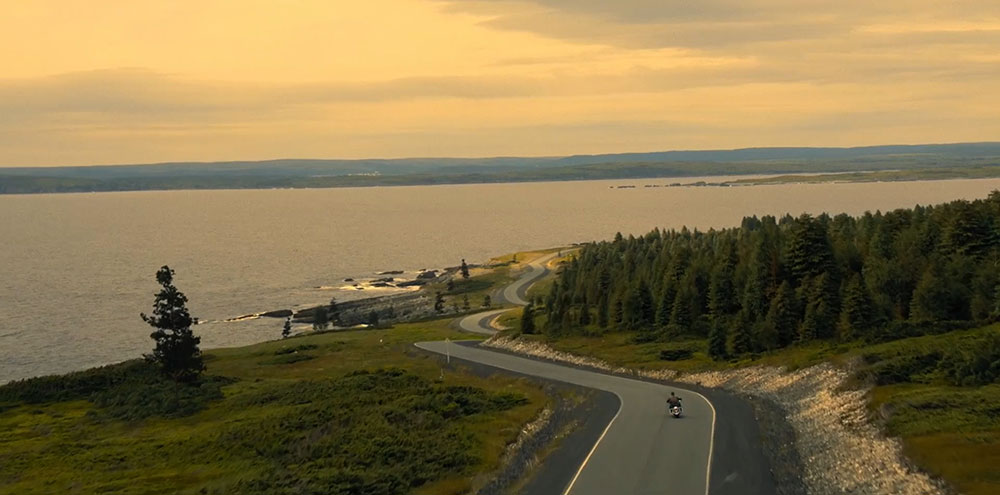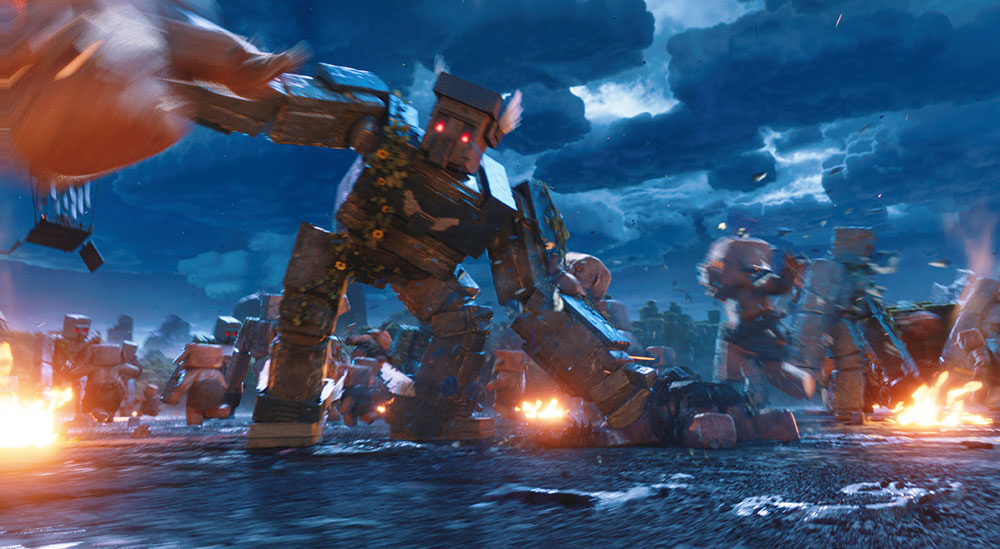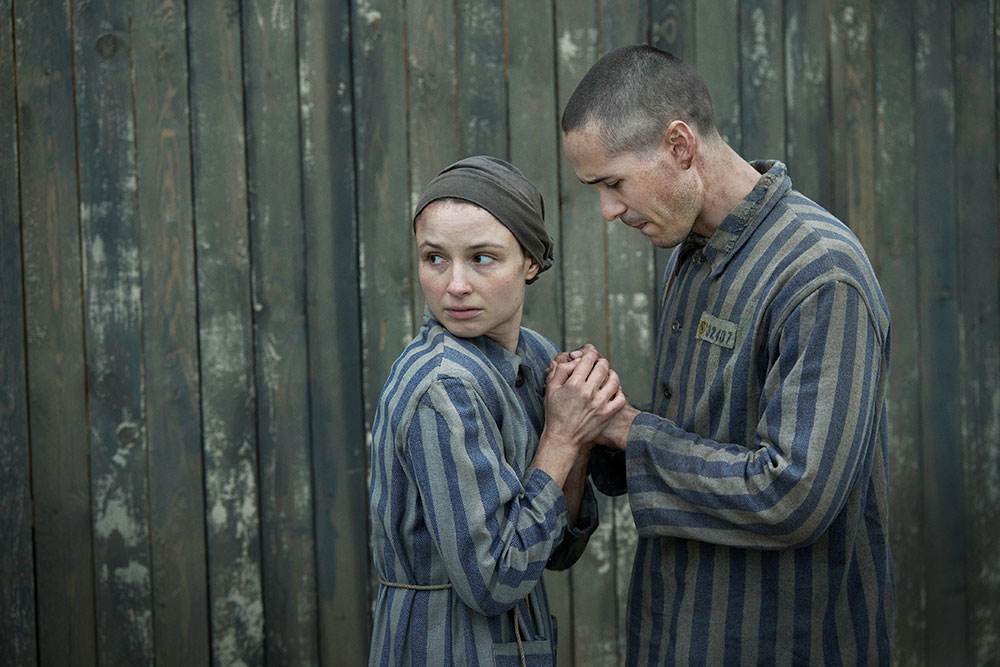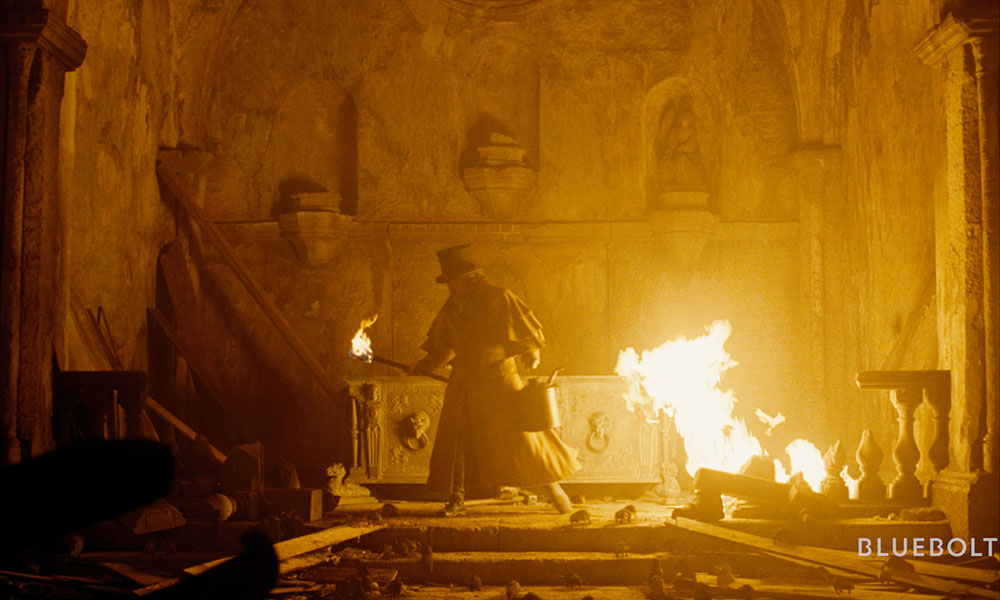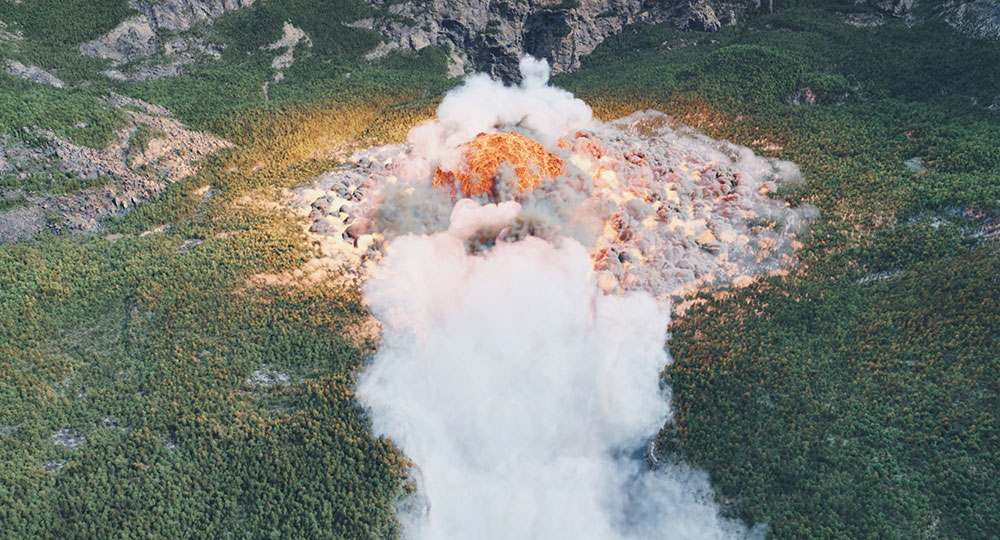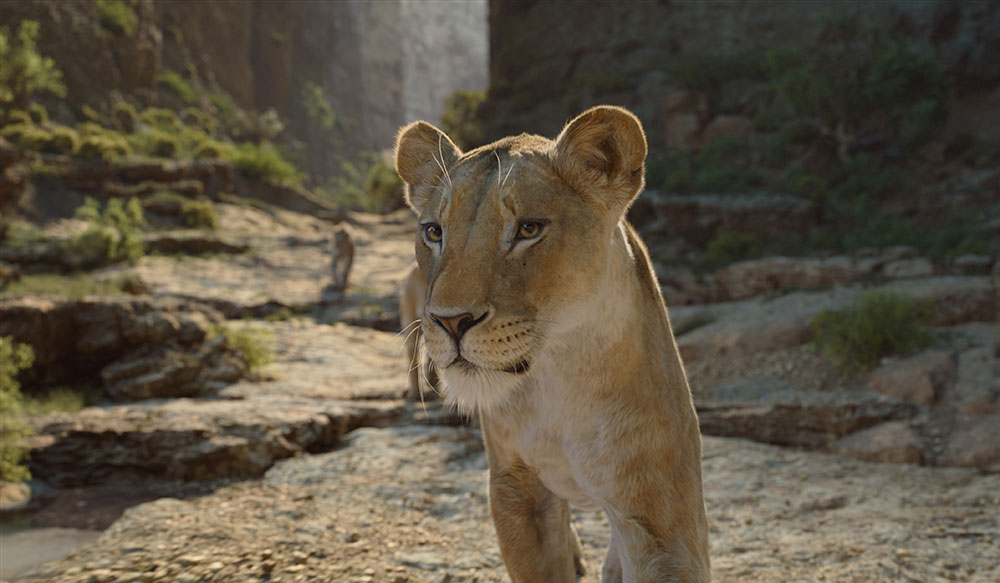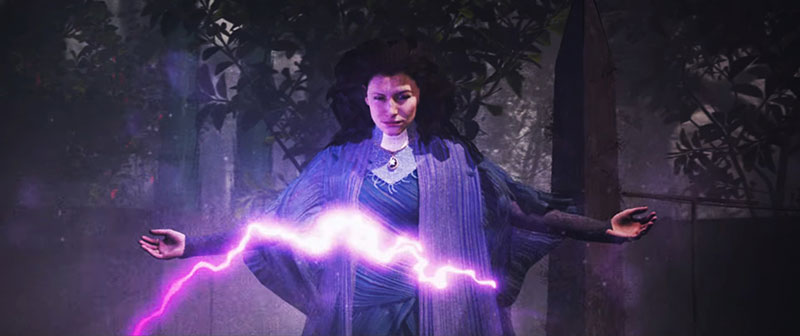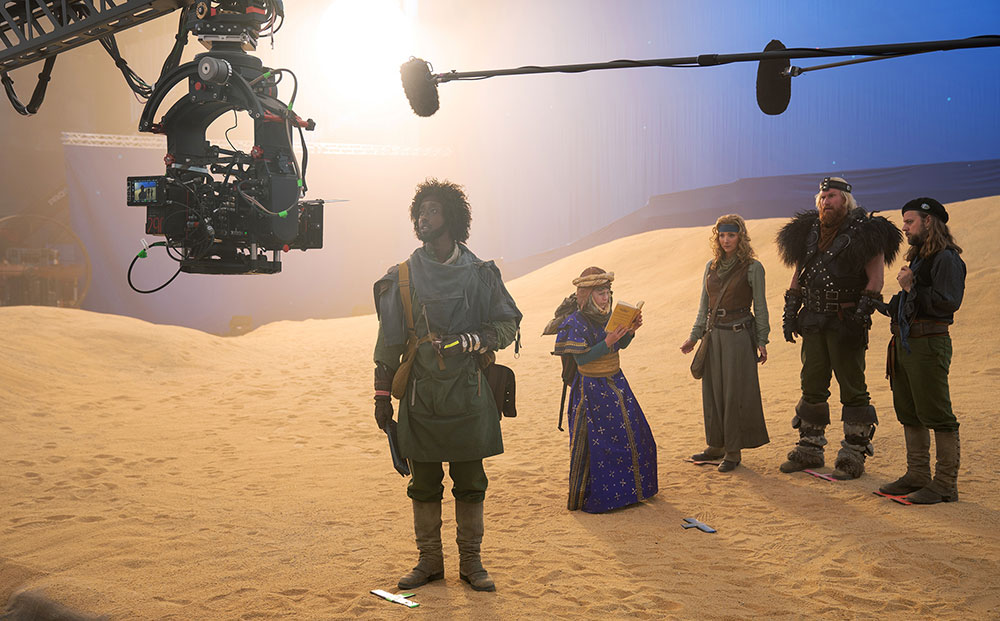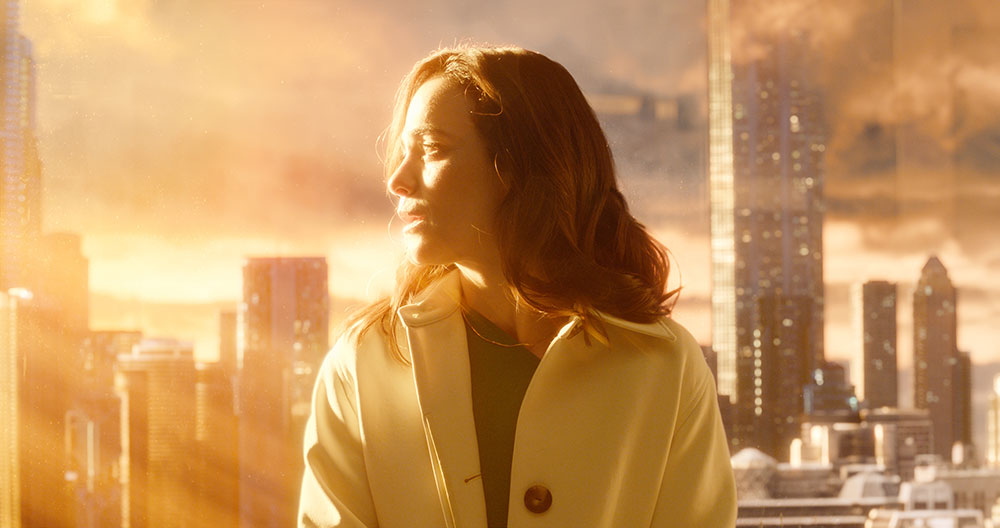DNEG’s Stephen James talks about building an immersive world for this virtual production of a high-speed train journey, and making exploding trains both fun and incredibly violent.
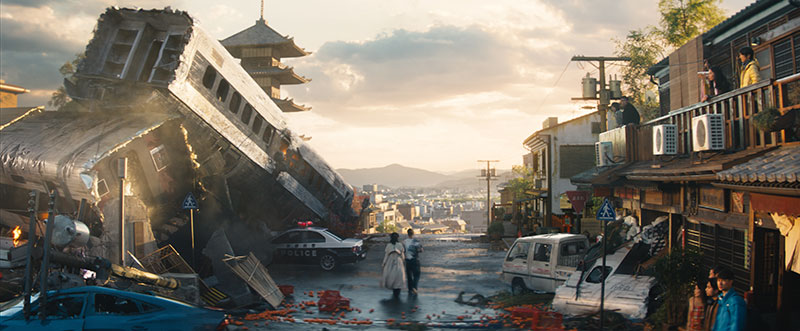
'Bullet Train' takes place on an overnight train on Japan’s high-speed Shinkansen rail network from Tokyo to Kyoto. On board are five hired assassins with separate missions tied by a common thread – the crime syndicate gangster, White Death.
The VFX team at DNEG, led by VFX Supervisor Stephen James, delivered over 1,015 shots for the movie. Despite that dangerous-sounding thriller storyline, ‘Bullet Train’ is a fast paced comedy directed by David Leitch, featuring numerous characters and a complex plot. Throughout the high-action sequences, it was essential to keep the audience immersed in a story happening on a moving train.
During production, DNEG’s Virtual Production team used LED screens to display footage of immersive CG environments on set. This imagery effectively brought Tokyo and the Japanese countryside to life around the actors as they performed for the camera. However, to illustrate the full journey unfolding outside the windows of a train moving at 300km/h, the team needed a vast amount of content. Stephen and the DNEG team used a range of techniques to generate several distinct train station environments for the character to travel through, from practical background plates captured on trips across Japan to over 25km of unique CG environments.
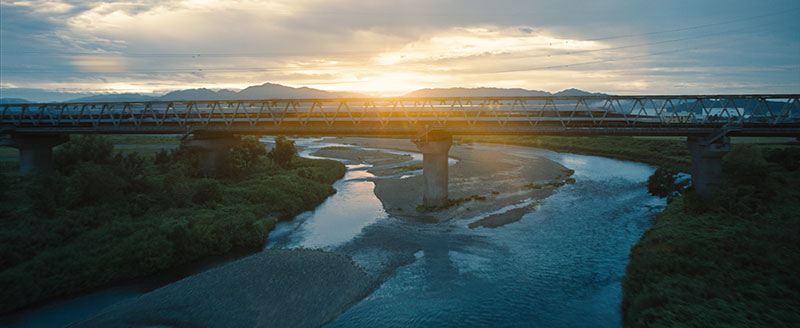
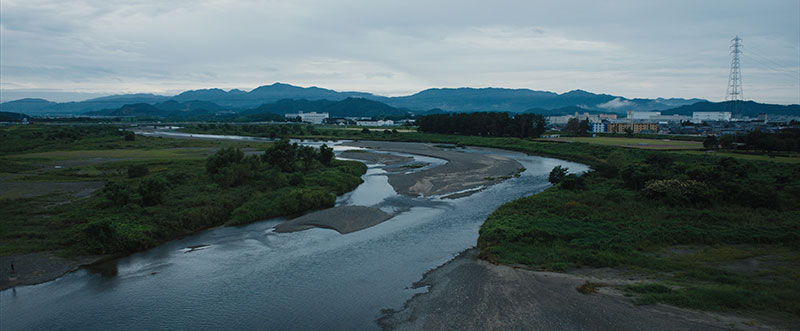
Remote Shooting on Location
COVID-19 pandemic lockdowns caused particular challenges. Since travel to Japan wasn’t possible, the team worked with a local vendor, JAID Productions, for reference photography of Japan. JAID captured a thorough variety of settings. However, accomplishing the shoots with enough control to get exactly the material they needed was an interesting process in itself.
“Working with JAID Productions was a great experience for both teams,” Stephen said. “Our shoot department sent over shoot kits and trained their staff remotely about using them. As JAID is a photography team, there was a lot to cover on how to do technical coverage for visual effects. We spent many late nights working remotely with them to capture comprehensive, detailed data around Japan including everything from the streets of Akihabara in Tokyo, to sunrises and sunsets in the rice fields of Maibara.
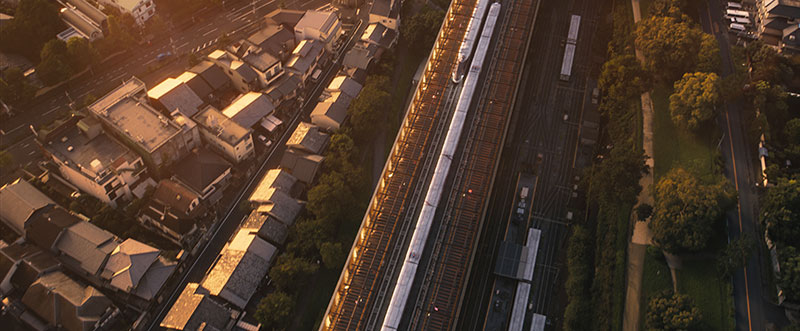
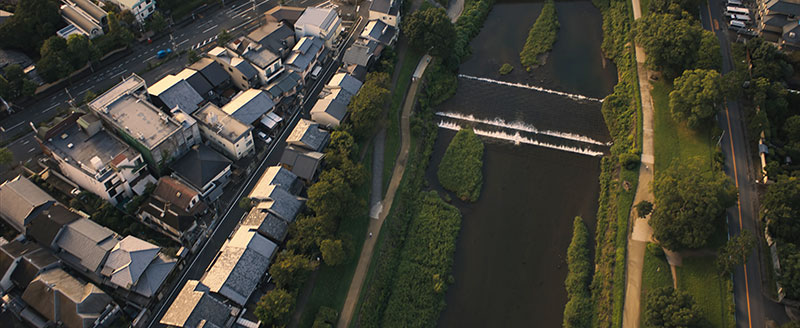
“We used all of this imagery and data to create a huge quantity of assets and environments seen as the train travels around Japan, as well as for general reference of lighting, skies and colour. The movie's first two acts consist of the train travelling through multiple stations and environments. During that section, the data collected by JAID were used to create everything, from cities to rural areas.” Variation was critical.
OpenStreetMap
The DNEG environments team also used new techniques based on OpenStreetMap data from all around Japan to generate huge areas of environment to travel through. By using this data, they were able to accurately identify the locations of forests, streets and buildings. That meant they could produce varied environments from dense city suburbs, traditional villages to the mountains surrounding Kyoto, and dress the scenes in authentic structures – buildings, rooftops, walls, street props and gardens -- based on local styles.
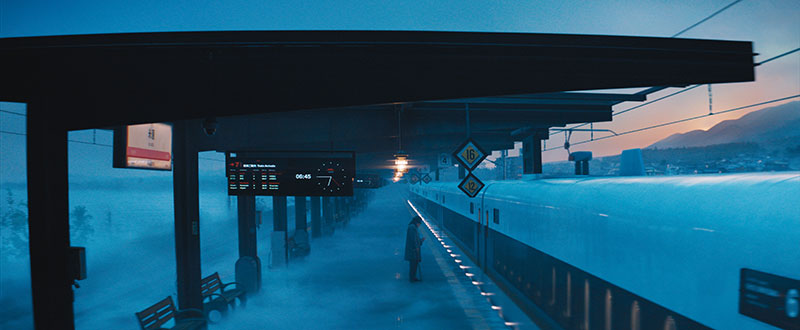
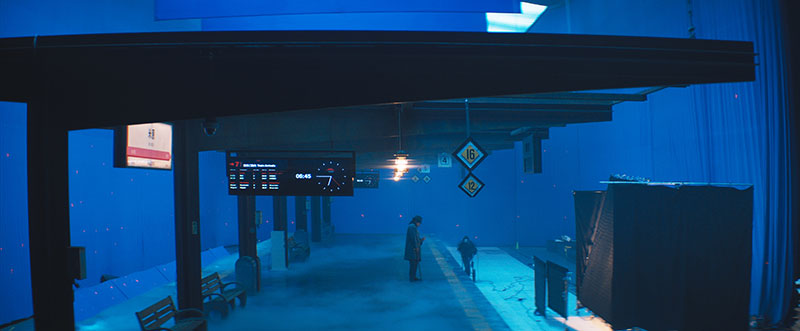
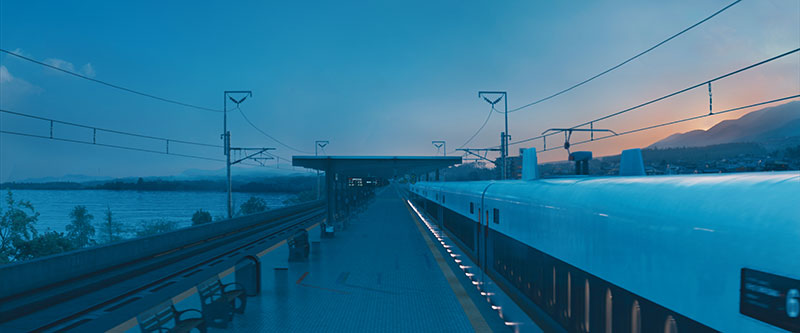
Describing the process, Stephen said, “We created our environment in self contained, 5-6 km stretches of tracks. These would give us enough variation when travelling at 300km/h. The production design had concepted and laid out a certain flow of environments for us to follow throughout the journey. For example, we knew we wanted to be in a mountain environment for the sunrise.
“We first created a base landscape for each environment, such as a mountain valley or lakeside area. Then, as a guide, our Environment Supervisors Jeremie Touzery and Romain Simonnet used large sections of OpenStreetMap (OSM) data in Houdini, taken from the areas in Japan that inspired our locations, to populate the environment with our trees, roads, props, houses, fences and so on. This procedural approach is effective but it still takes considerable work to create a library of assets, and rules for how to use them.
Laying Down the Rules
“For example, the OSM data can tell you the position of a building, and how many floors it is, but then it is up to the environment team to generate a variety of walls, windows, rooftops, fences, and create the rules for how and where to place them to fit the style of that area. We also had the ability to change between more traditional styles for rural areas, to more modern styles as we entered Kyoto.”
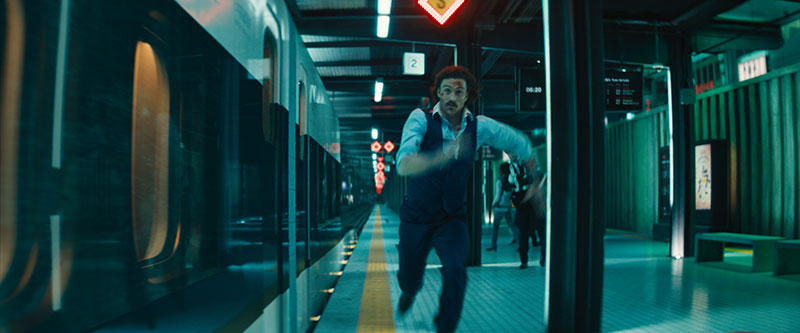
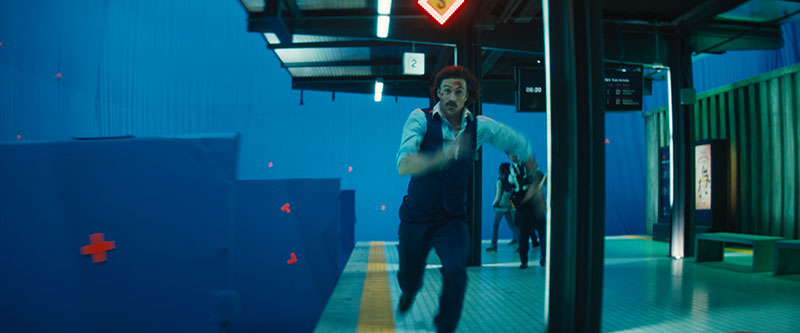
With these rules and assets sorted, the team had a head start when filling out those massive environments, but they still needed to do a lot of manual set dressing to achieve the realism and style the film required. “We need to keep flexibility in the system as there will always be specific demands when it comes to each shot. For example, we may have to add a building to block the sun at specific moments to align with the on-set lighting,” said Stephen.
Styling Stations
When it came to styling the stations, some creativity was required. He noted that if their work had been too realistic, every single station would look quite similar and most of the journey would be blocked by sound walls. Instead, the production designer wanted each one to be unique and stand out from the others, whether through the architecture, density, natural environment or lighting, working as an extension of the style of the film inside the train.
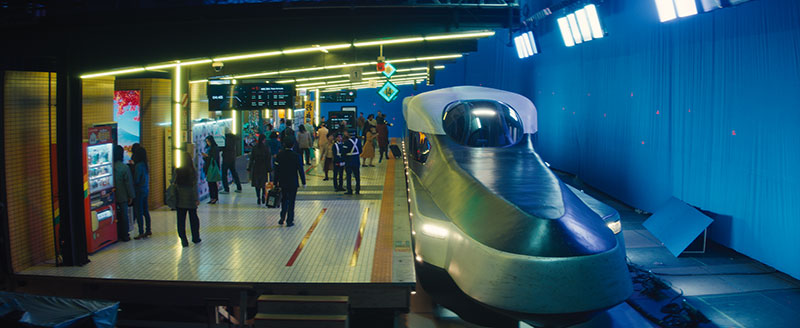
We considered each station as a kind of ‘postcard’ to represent the feel and vibe of that area,” Stephen said. “For the city environments, most were based on real locations in Tokyo, Kyoto and so on, but just finding a unique area to place our train station within each location to give us the best views of iconic landmarks or interesting areas was important. For the rural stations, we were inspired by lots of smaller stations that wouldn’t normally have a modern Shinkansen train running through them.”
Spirited Violence
From building realistic, complex environments in this unique way, the team moved into designing the “fun but incredibly violent” action sequences (as Stephen described them) that define the style and spirit of ‘Bullet Train’. That meant creating action sequences with tremendous FX explosions of cars, CG weapons, train crashes and collisions. Many different VFX techniques were combined to produce FX explosions of cars, CG weapons and gore.
He said, “The goal was a natural yet breathtaking result. An asset and effect that stands out is the CG poisonous snake that is accidentally released on the train. On set, we used a mock-up, which we painted out and animated – nevertheless, it was a significant challenge to animate the snake to align with the movement and performance of actor Brad Pitt and find a balance between comedy and danger.”
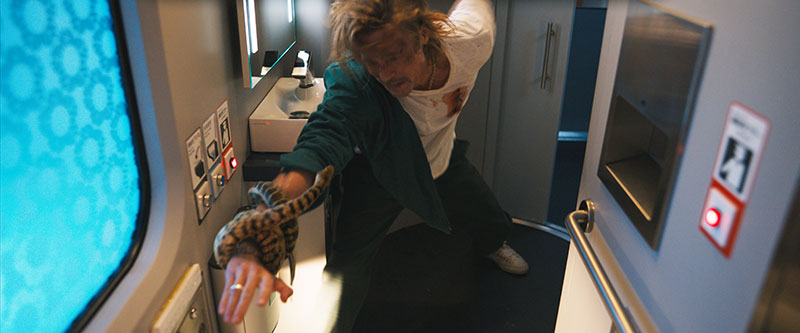
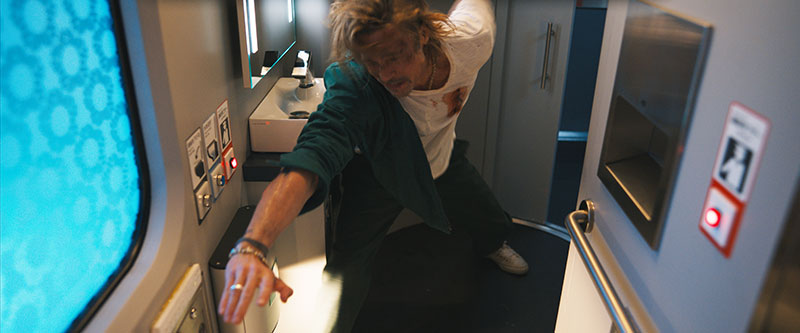
Another example was the massive slow-motion briefcase FX explosion that blasts the hero and villain back onto the train. For this, the FX team created a detailed explosive event, with a shockwave, sparks and paper money blown in every direction.
Anticipating Destruction
However, in the main scene of this kind, taking place in the third act of the film, the hero train crashes into another oncoming train, when it is sheared open as if by a can opener. The production team built a massive station and connecting city, all in CG, to resemble a train utility station on the outskirts of Kyoto. In the finale, the train bursts out of the end of the station, down a mountain and into a traditional village, as the hero flies through the cabins.
Making all of this work in the story involved several considerations as the artists proceeded with the build. They built the train anticipating the impending destruction, especially since it was going to be filmed close-up and in slow motion. “To start, every car needed to be distinct and distinguishable from the rest and show considerable detail,” Stephen said. “The train had economy, first class, a lounge and driver cars – all with identifiable interiors. We then included props that enhanced each of the cars. For example, the lounge car was filled with bottles, utensils and snacks.
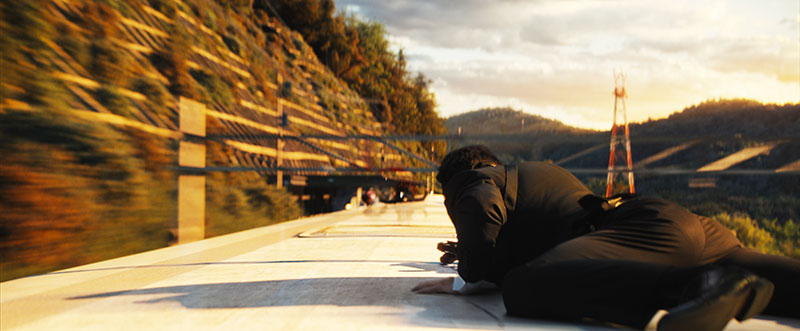
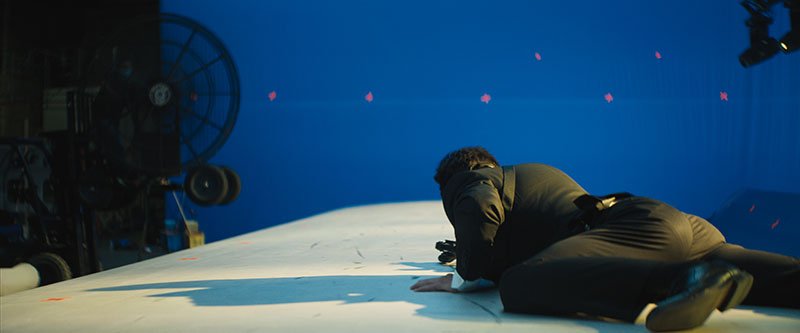
“Another challenge was that Shinkansen trains are kept meticulously clean, and experience very little vibration or secondary movement. We took extra care to add fine details such as surface scratches, panel seams, screws, panel bends to add a level of realism. The interior framework was built for destruction work and our panelling was given some bend around these areas, just as it would in reality.
Can Opener
“Nick Papworth supervised our FX team and oversaw the train destruction, which was complex to set up. For instance, underneath the exterior, we had aluminium framing with foam wall panels, rubber seals, bundles of cables, electrical boxes and more. As the story progressed on the train, we needed to hit specific action and comedy beats which included flying Katanas (curved Japanese swords) passing the camera or coffee pots that had to smack Brad Pitt in the face.”
Being asked to shear the train open with a can opener was a novel request, nevertheless, they found many references for how the material should behave, such as shearing metal panels. The main challenge was choreographing that behaviour in a way that was clear to the audience, and having just enough damage to open the side of the train without doing so much damage that they would have to to end the movie early.
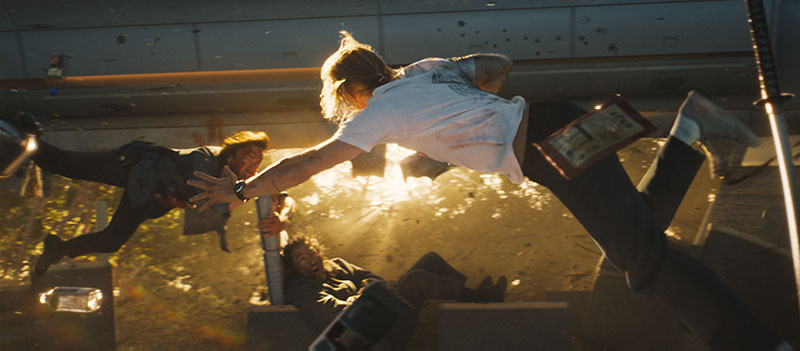
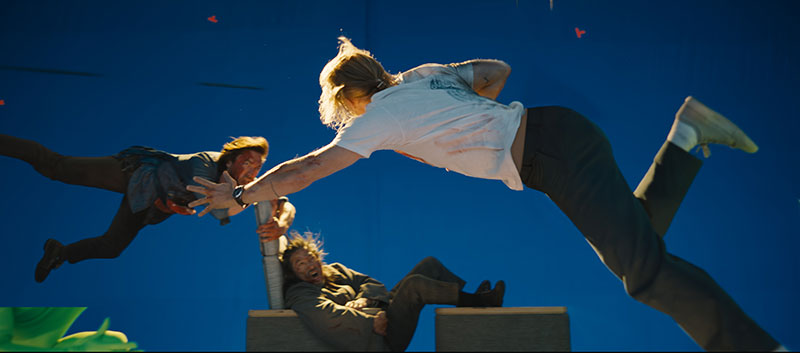
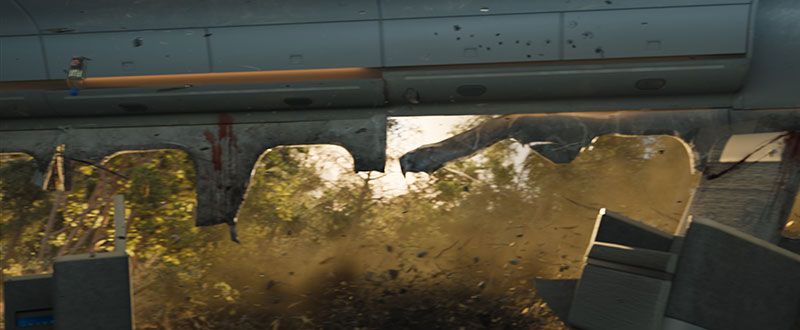
That is where we took some liberties in our FX and shifted the animation away from realism and into a fun blockbuster moment,” said Stephen. “There isn’t a lot of space inside a Shinkansen train for action or destruction to take place! On-set, the production team built the train in a modular way allowing them to add or remove sections in order to get the camera and stunt team into small spaces. They could remove or add walls, rows of chairs and so on.”
Inside Outside Upside Down
Meanwhile, DNEG and the production needed to keep track of what was happening to the hero inside the train as well as outside. The inner train sequence was previsualized by Alex Cannon and the DNEG Previs team, who kept track of and reconciled the two sequences. “We had to get creative in post in order to follow the stylised camera work and make sure we had clear views of the interior. Throughout the entire crash, we could add or remove segments of the train to allow for more visibility or even to have more light to match the on-set lighting. In one case, we actually just sliced the train in half to give us a clear side view of Brad Pitt flying down the train.
“Everything in the crash scenes – apart from the actors – was full CG. So, looking at Brad Pitt, he was shot on a waist rig on a bluescreen to allow him to spin and fly down the length of the train as it smashes and rips apart around him. The crash shifts between extreme slow motion and real-time as the train spins, slides and smashes through mountains, walls and buildings before smashing and settling at the end of the CG plaza.” www.dneg.com

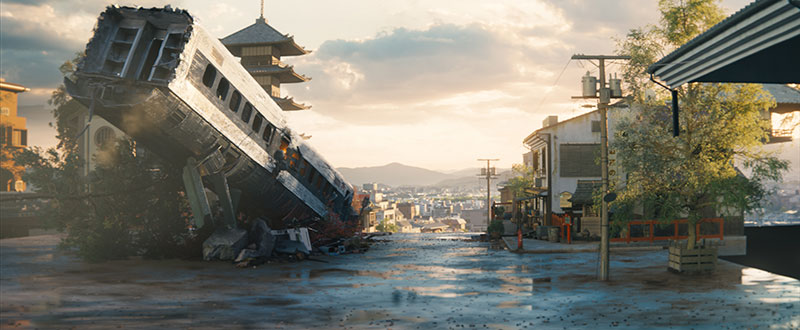
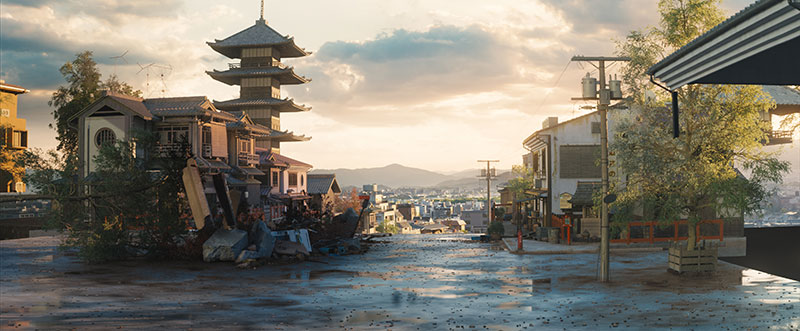
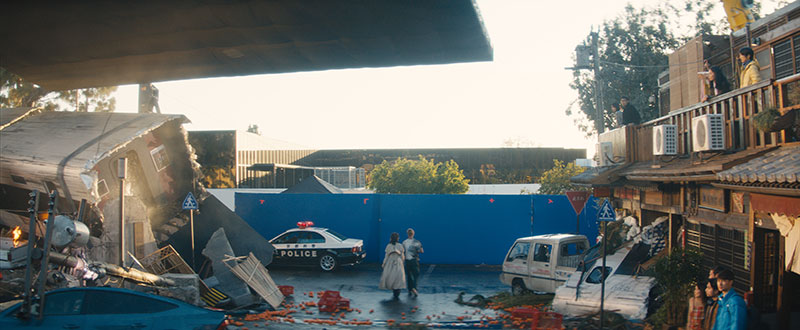
Words: Adriene Hurst, Editor
Images Courtesy of DNEG © 2022 Sony Pictures Digital Productions Inc. All Rights Reserved.



